
(1799 - 1879)
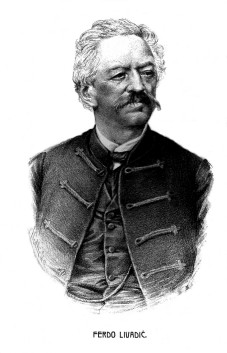

(1799 - 1879)

Ferdo Livadić (Wiesner) je bio prvi moderni hrvatski skladatelj, začetnik narodnog stila u hrvatskoj glazbi, te jedan od vođa Ilirskoga pokreta, odnosno Hrvatskog narodnog preporoda. |
Ferdo Livadić (Wiesner) was the first modern Croatian composer, the founder of the national style in Croatian music, and one of the leaders of The Illyrian Movement, that is The Croatian National Revival. |
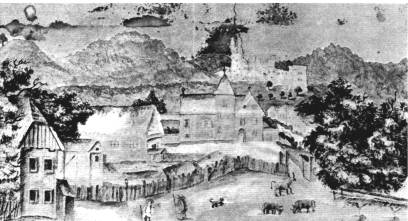
Samobor (akvarel, oko 1810) - u sredini Livadićev posjed
Samobor (watercolor, around 1810) - in the middle The Livadić Estate
Godine 1815. poslao ga je otac u Graz (Austrija) studirati pravo. U isto je vrijeme studirao i glazbu kod znanog skladatelja Anselma Hüttenbrennera, prijatelja Beethovena i Schuberta. uskoro je postao poznat u Grazu kao violinist, pijanist i skladatelj, pa ga je Štajersko glazbeno društvo proglasilo počasnim članom. Nakon što je diplomirao pravo 1822. godine, htio je otići u Beč i steći doktorat, te nastaviti svoje glazbeno obrazovanje. Ali, s navršenih 24 godine, otac mu je, u skladu s tetkinom oporukom, predao imanje. Morao se vratiti u samobor i skrbiti za imanje. U Grazu se i oženio 24. veljače 1823. godine s Katarinom Presinger. |
In 1815. his father sent him to Graz (Austria) to study law. At the same time he studied music by the well known composer Anselmo Hüttenbrenner, the friend of Beethoven and Schubert. Soon he became known in Graz as a violinist, pianist and a composer and Steyr Music Society made him a honorary member. After his law degree in 1822 he wanted to go to Vienna to get his doctorate and continue his musical education. But, when he turned 24, his father had, as was stated in his aunt's will, handed him over the estate. He had to return to Samobor and take care of the estate.He got married in Graz on February 24, 1823, with Katarina Presinger. |
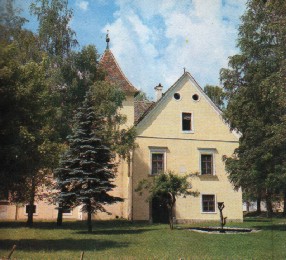
Livadićev dvorac - danas Samoborski muzej
The Livadić Mansion - today The Samobor Museum
Punih 56 godina proveo je Livadić u svome dvorcu i bio je domaćin trima generacijama hrvatskih političara, pisaca, pjesnika i skladatelja. Njegov je dom bio središte Ilirskoga pokreta i Hrvatskog narodnog preporoda. Proučavao je i skupljao narodno glazbeno blago i koristio ga u svojim skladbama. On je u svome domu jedne zimske večeri 1833. godine skladao glazbu za prvu i najslavniju hrvatsku budnicu "Još Hrvatska ni propala" na tekst svoga prijatelja i vođe Ilirskoga pokreta Ljudevita Gaja. |
He dwelled in his mansion for full 56 years, being the host to three generations of Croatian politicians, writers, poets and composers.His home was the center of The Illyrian Movement and The Croatian National Revival. He studied and collected the folk music heritage and later used it in his compositions. He wrote in his home on one winter evening in 1833 the music for the first and most famous Croatian patriotic song "Croatia Hasn't Perished Yet", writen by his friend and the leader of The Illyrian Movement, Ljudevit Gaj. As Gaj himself has told, on the early 1833 winter evening he was riding on a sleigh to Livadić in Samobor. Amazed with the beauty of the winter scenery and with the peasant music heard from the nearby village, he started to make rhymes. Arriving at the Livadić home, he rushed up the stairs, asked for some paper and noted down the poem. Livadić sat at his piano and to Gaj's humming wrote the music in folk rhythm. |
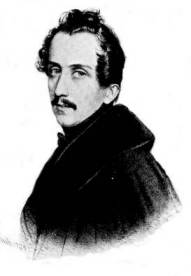
Ta je pjesma bila prva hrvatska budnica i ubrzo je postala svojevrsnom himnom Ilirskoga pokreta. Prvi je puta javno izvedena u zagrebačkom kazalištu 7. veljače 1835. godine u međučinu izvedbe predstave Josefa Schweigerta "Die Magdalenen Grotte bei Ogulin" (na njemačkom). Za zbor i orkestar popijevku je priredio dirigent Juraj Wisner von Morgenstern. Otpjevana na hrvatskom, pjesma je doživjela burne ovacije, ponovljena je dest puta i redovno je izvođena u kasnijim reprizama predstave. |
This song was the first Croatian awakening song and soon became a kind of hymn of The Illiryan Movement. it was performed for the first time in public as an intermezzo in The Zagreb Theater during the performance of Josef Schweigert's play "Die Magdalenen Grotte bei Ogulin" (in German). The arrangement for the choir and orchestra was written by the conductor Juraj Wisner von Morgenstern. Sung in Croatian, the song received standing ovations, was repeated ten times and was regularly performed later at reruns of the play. |
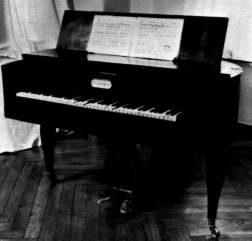
Livadićev glasovir, rad Aloysa Graffa, Beč, oko 1830. - danas u Samoborskom
muzeju
The Livadić piano, made by Aloys Graff, Vienna, around 1830 - today
in The Samobor Museum
U svome dvorcu Livadić je ugostio sve istaknute osobe i vođe Ilirskoga pokreta. Njegovi stalni gosti bili su, pored Gaja, Ljudevit Vukotinović (Livadić je uglazbio njegovu pjesmu "Okićke vrane"), Dragutin Rakovac, Petar Preradović, Stanko Vraz (koji se prilikom posjeta Samoboru zaljubio u u lijepu Gajevu nećaku - Ljubicu Julijanu Cantilly i posvetio joj svoju knjigu pjesama "Gjulabije"), Vatroslav Lisinski (autor prve hrvatske opere "Ljubav i zloba") i mnogi drugi. |
In his mansion Livadić hosted all the important persons and leaders of The Illiryan Movement. His regular guests were, beside Gaj, Ljudevit Vukotinović (Livadić wrote music for his poem "The Okić Crows"), Dragutin Rakovac, Petar Preradović, Stanko Vraz (who has, during his visit to Samobor, fallen in love with beautiful Gaj's niece Ljubica Juliana Cantilly and he later dedicated his book of poems "Gjulabije"/"The Red Apples"/ to her), Vatroslav Lisinski (author of the first Croatian opera "Love and Malice") and many others. |
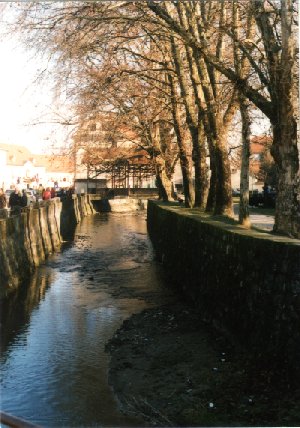
Livadićeva ulica - Livadićeva Street